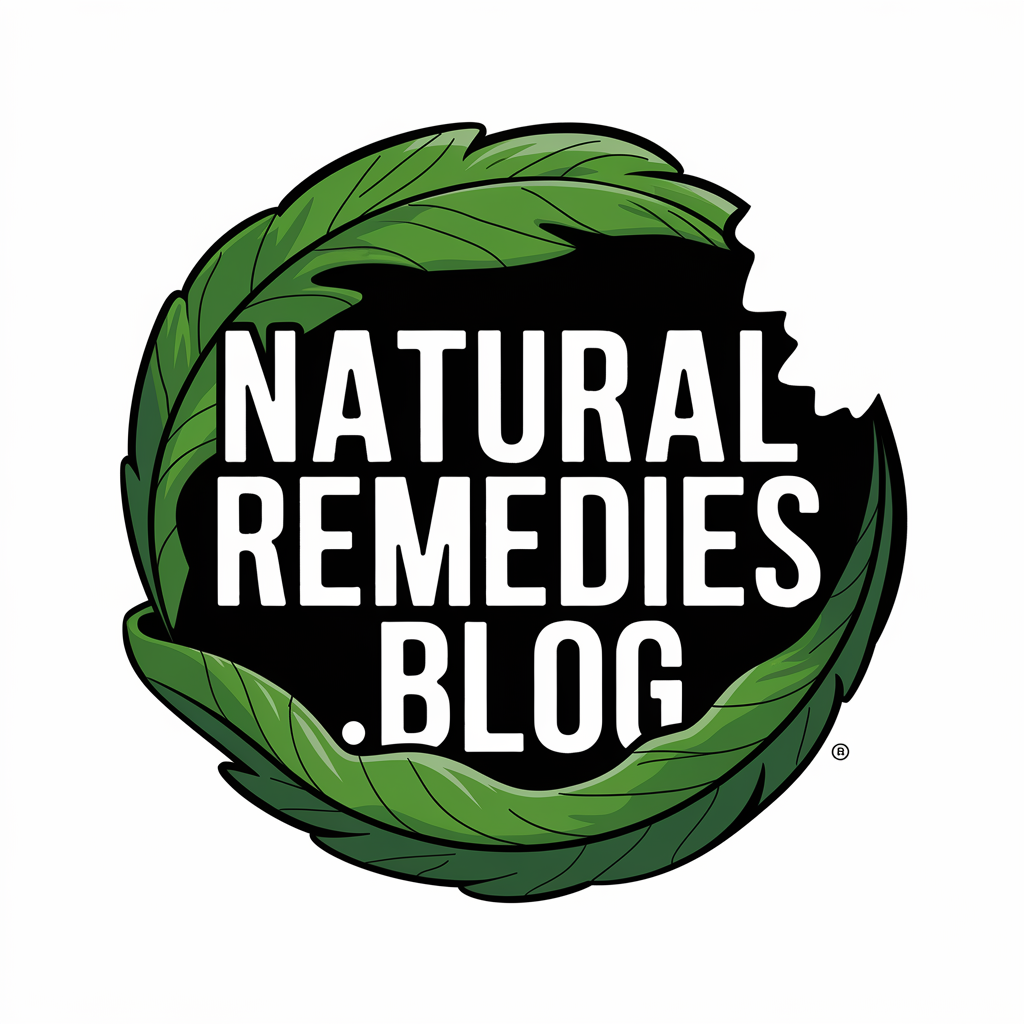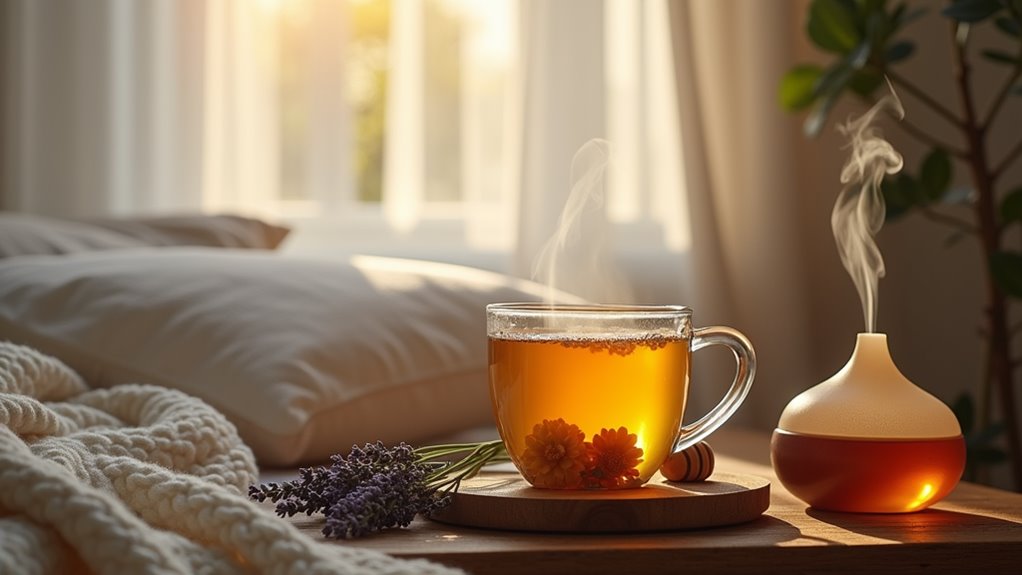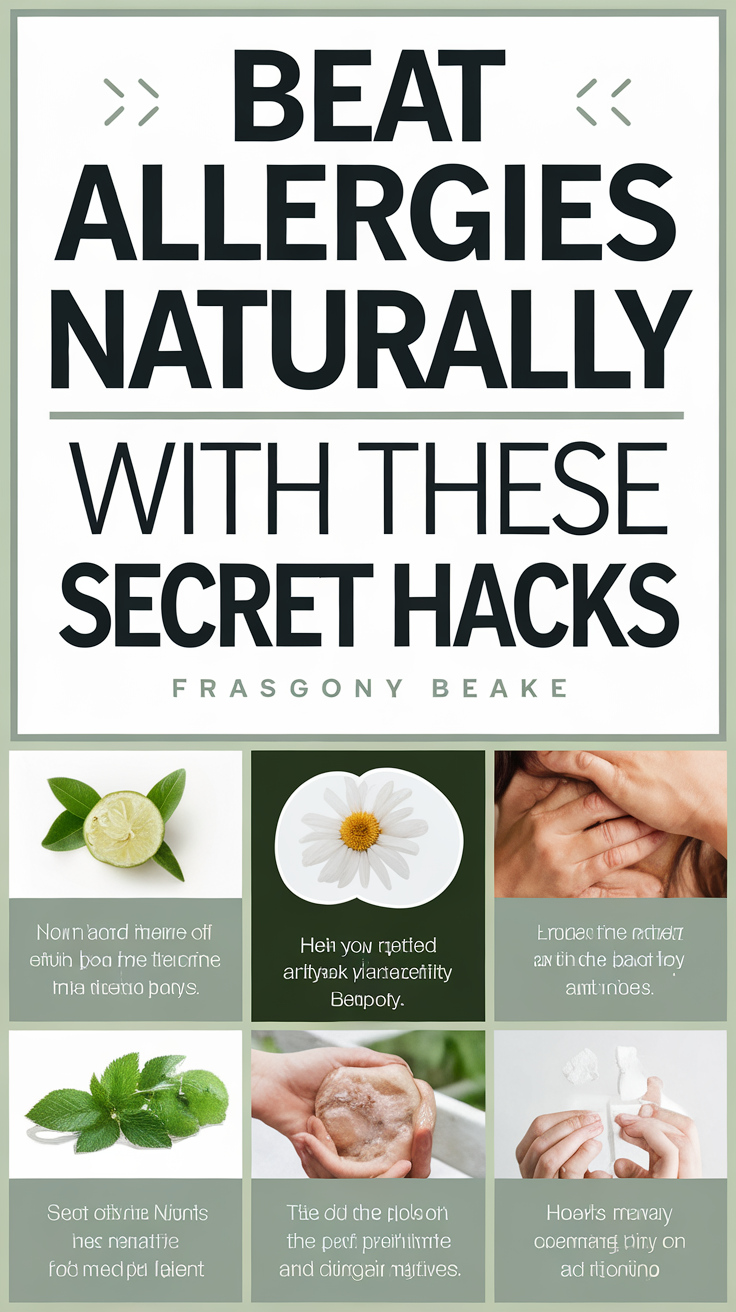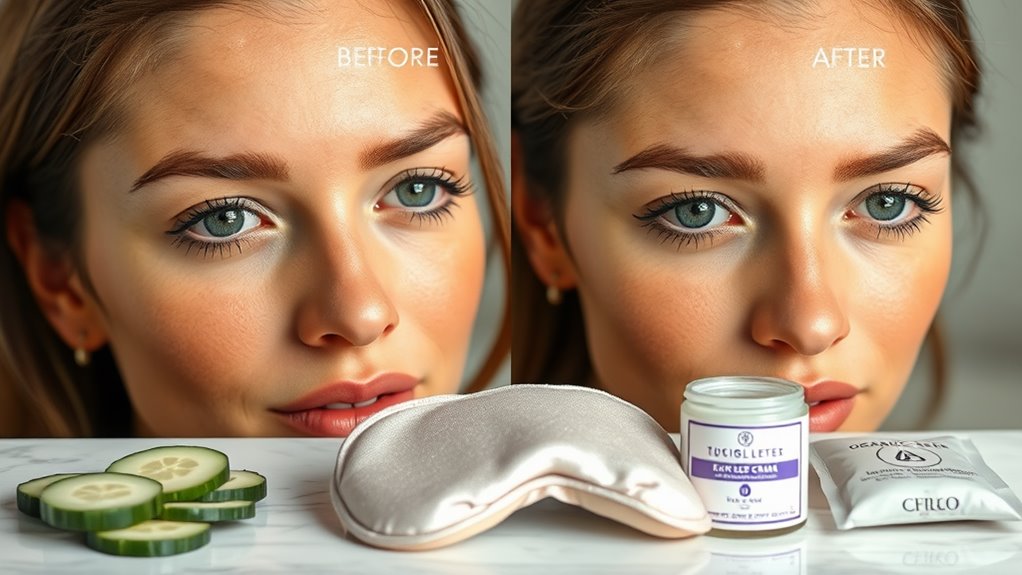Quick Allergy Relief Ideas That Worked for Me
You’ll find quick allergy relief by implementing proven strategies that target symptoms at their source. Start with saline nasal irrigation to flush out allergens, then use HEPA air purifiers to remove airborne particles. Add natural antihistamines like quercetin-rich foods to your diet, and practice deep breathing exercises to ease respiratory discomfort. Make essential lifestyle changes like showering before bed and maintaining proper indoor humidity. These evidence-based solutions mark the beginning of your comprehensive allergy management plan.
My Allergy Journey and Symptoms
Three distinct allergic conditions – seasonal rhinitis, pet dander sensitivity, and dust mite reactions – have shaped my understanding of allergy management.
My symptoms typically manifest as persistent nasal congestion, itchy eyes, and occasional skin rashes. Through systematic tracking, I’ve identified specific triggers: spring tree pollen, cat exposure, and poorly maintained bedding.
These observations led me to explore various allergy remedies, from antihistamines to environmental controls. By documenting symptom severity and treatment responses, I’ve developed an evidence-based approach to managing my allergic reactions.
This methodical process has proven invaluable in optimizing my treatment strategies.
I discovered that taking local raw honey regularly helped reduce my sensitivity to spring tree pollen significantly.
Natural Home Remedies for Instant Relief
While pharmaceutical interventions offer reliable relief, several evidence-based natural remedies can provide immediate comfort for allergy symptoms.
You’ll find significant relief by irrigating your nasal passages with a saline solution, which effectively flushes out allergens and reduces inflammation.
Local honey consumption may help build immunity to regional pollen.
Essential oils like eucalyptus and peppermint can clear congested airways when diffused.
Steam inhalation with chamomile tea reduces mucus membrane irritation.
HEPA air purifiers remove airborne allergens, while showering before bed eliminates pollen from your hair and skin, preventing nighttime symptoms.
Stinging nettle extract provides potent natural antihistamine effects against congestion and inflammation.
Essential Lifestyle Changes That Made a Difference
You’ll find significant allergy symptom reduction by maintaining a dust-free home environment through regular cleaning and air filtration.
Regular outdoor exercise, when pollen counts are low, can strengthen your respiratory system and improve your body’s natural defense mechanisms.
Staying hydrated helps thin mucus secretions and flush out allergens, making it essential to consume adequate water throughout the day.
Using nasal irrigation systems daily effectively removes irritants and provides immediate relief from congestion and allergy symptoms.
Keep Your Home Clean
Since allergens tend to accumulate in household dust, maintaining a clean living space is crucial for reducing allergy symptoms.
You’ll need to vacuum carpets twice weekly using a HEPA-filtered vacuum cleaner, and mop hard floors with a damp microfiber mop. Wipe surfaces daily with electrostatic cloths that trap dust rather than dispersing it.
Replace your HVAC filters monthly and consider installing air purifiers in bedrooms.
Wash bedding weekly in hot water (130°F minimum) to eliminate dust mites.
Don’t forget to clean curtains, blinds, and ceiling fans regularly, as these surfaces collect significant amounts of allergenic particles.
Exercise in Fresh Air
Regular outdoor exercise can significantly reduce allergy symptoms by strengthening your respiratory system and boosting immune function.
You’ll achieve optimal results by timing your workouts when pollen counts are lowest – typically early morning or evening hours. Monitor local air quality reports and avoid peak allergen periods.
Start with low-intensity activities like walking or yoga, then gradually progress to more vigorous exercises.
Wear wraparound sunglasses to protect your eyes from airborne allergens, and immediately shower after outdoor sessions to remove pollen from your skin and hair.
If you experience symptoms, reduce intensity but maintain consistency in your routine.
Stay Well Hydrated Daily
Along with proper exercise habits, maintaining optimal hydration levels plays a key role in managing allergy symptoms. Drinking adequate water helps thin mucus secretions and flush out allergens from your system.
| Hydration Benefits | Implementation Tips |
|---|---|
| Reduces histamine production | 8-10 glasses daily |
| Thins mucus membranes | Set phone reminders |
| Supports immune function | Track intake digitally |
| Enhances detoxification | Carry water bottle |
You’ll need to increase your fluid intake during high pollen seasons or when experiencing acute symptoms. Monitor your urine color – it should remain light yellow to clear, indicating proper hydration levels.
Must-Have Over-the-Counter Solutions
When choosing between nasal sprays and antihistamine pills for allergy relief, you’ll find that nasal sprays directly target inflammation in your nasal passages while pills work systemically throughout your body.
Your choice should depend on your primary symptoms: nasal sprays excel at relieving congestion and post-nasal drip, while pills better address systemic reactions like itchy eyes and sneezing.
For quick congestion relief, you can’t beat decongestant sprays containing oxymetazoline or phenylephrine, but don’t use them for more than three consecutive days to avoid rebound congestion.
Nasal Sprays vs. Pills
Choosing between nasal sprays and oral antihistamines presents a crucial decision for allergy sufferers seeking immediate relief.
Nasal sprays deliver targeted medication directly to inflamed nasal tissues, offering localized treatment within 15-30 minutes. You’ll find they’re especially effective for congestion and post-nasal drip.
Pills, however, circulate throughout your system, addressing multiple symptoms simultaneously. While they take 30-60 minutes to activate, they provide longer-lasting relief, typically 12-24 hours.
Consider your primary symptoms: if nasal congestion dominates, opt for sprays. For systemic reactions like itching and sneezing, pills prove more beneficial.
You can safely combine both under medical supervision.
Fast Relief Decongestants
Fast-acting decongestants provide rapid relief from severe nasal congestion through two primary mechanisms: reducing blood flow to swollen nasal passages and decreasing mucus production. You’ll find phenylephrine and pseudoephedrine as the most effective over-the-counter options available at your local pharmacy.
-
Phenylephrine (PE) works within 30 minutes and lasts 4 hours, with minimal side effects.
-
Pseudoephedrine requires ID to purchase but delivers stronger 12-hour relief.
-
Both medications constrict blood vessels to reduce inflammation and fluid accumulation.
Consider consulting your healthcare provider before use, especially if you have high blood pressure or heart conditions, as these medications can affect cardiovascular function.
Simple Diet Modifications to Reduce Reactions
Making thoughtful adjustments to your daily diet can significantly reduce allergy symptoms without medication. Eliminate common inflammatory foods like dairy, gluten, and processed sugars for two weeks to identify triggers.
You’ll notice reduced mucus production and decreased histamine responses.
Add natural antihistamines to your meals, including quercetin-rich foods like onions, apples, and berries. Incorporate omega-3 fatty acids through fish or flaxseed to reduce inflammatory responses.
Boost your vitamin C intake with citrus fruits and leafy greens to strengthen your immune system’s regulation of histamine production.
Track your symptoms in relation to dietary changes to identify personal trigger foods.
Consider adding raw local honey to your morning routine, as it contains trace amounts of regional pollen that can help build natural immunity to seasonal allergies.
Proven Environmental Control Methods
Implementing evidence-based environmental controls can significantly reduce your exposure to common allergens and minimize symptoms. Research demonstrates that strategic modification of your indoor environment yields measurable reductions in allergic reactions.
-
Install HEPA air purifiers in bedrooms and living spaces to remove 99.97% of airborne particles, including pollen, dust mites, and pet dander.
-
Maintain indoor humidity between 30-50% using dehumidifiers to inhibit mold growth and dust mite proliferation.
-
Encase mattresses, pillows, and box springs in allergen-proof covers that prevent dust mite colonization and allergen accumulation.
These interventions, when consistently applied, create a controlled microenvironment that supports respiratory health. Regular steam inhalation therapy can provide additional relief by breaking up mucus and reducing nasal inflammation.
Helpful Breathing Exercises and Techniques
While medications and environmental controls help manage allergy symptoms, targeted breathing exercises can provide immediate relief and strengthen your respiratory function over time. You’ll find specific techniques that reduce inflammation and clear your airways effectively.
| Exercise | Technique | Benefit |
|---|---|---|
| Diaphragmatic | Breathe deep into belly | Reduces chest tension |
| Pursed-lip | Exhale through pursed lips | Decreases wheezing |
| Alternate nostril | Block one nostril at a time | Clears nasal passages |
| Box breathing | 4-count inhale/hold/exhale | Calms nervous system |
| Buteyko method | Reduced breathing volume | Controls asthma symptoms |
Practice these exercises for 5-10 minutes daily to maximize their therapeutic effects and enhance your body’s natural defense against allergens.
Daily Habits That Minimize Allergy Flare-Ups
To minimize allergy triggers in your home environment, you’ll want to keep windows closed during peak pollen times and rely on HEPA air purifiers to trap airborne allergens.
Your air purifier’s effectiveness increases when you position it in rooms where you spend the most time, particularly your bedroom.
Taking a shower before bed removes accumulated pollen and other allergens from your hair and skin, preventing transfer to your pillow and bedding.
Keep Windows Mostly Closed
Since outdoor allergens readily enter through open windows, keeping them closed during peak pollen times significantly reduces indoor exposure to allergy triggers. Research indicates that pollen levels peak during early morning and late afternoon hours, making these crucial times to maintain closed windows.
-
Install HEPA air purifiers near windows to filter any particles that enter when ventilation is needed.
-
Monitor local pollen forecasts to determine optimal times for brief window opening.
-
Use air conditioning with clean filters during high pollen seasons instead of relying on natural ventilation.
This strategic approach to window management helps maintain indoor air quality while minimizing allergen infiltration into your living space.
Use HEPA Air Purifiers
High-efficiency particulate air (HEPA) purifiers represent one of the most effective tools for controlling indoor allergens.
These devices can remove up to 99.97% of airborne particles as small as 0.3 microns, including pollen, dust mites, pet dander, and mold spores.
You’ll achieve optimal results by placing HEPA purifiers in rooms where you spend the most time, particularly your bedroom.
Select a unit rated for your room’s square footage and position it away from walls and furniture.
Replace filters according to manufacturer specifications, typically every 6-12 months, to maintain peak performance.
Running your purifier continuously, rather than intermittently, provides the best protection against allergens.
Shower Before Bed
Taking a shower before bedtime constitutes one of the most underrated allergy management strategies. During the day, your hair and skin collect various allergens, including pollen, dust, and pet dander. By showering before bed, you’ll prevent transferring these irritants to your pillowcase and bedding.
-
Hot water and steam help clear nasal passages and reduce congestion.
-
Washing your hair removes trapped pollen that could otherwise spread to your face while sleeping.
-
The relaxing effect of a warm shower can reduce stress-induced histamine release.
This simple habit significantly decreases nocturnal allergy symptoms and improves sleep quality by creating a cleaner sleep environment.
Emergency Relief Strategies That Work
When allergies strike unexpectedly, several evidence-based interventions can provide rapid relief.
Apply cold compresses to your eyes to reduce inflammation and itching. Rinse your nasal passages with saline solution using a neti pot or squeeze bottle to flush out allergens and thin mucus.
Take fast-acting antihistamines like diphenhydramine for immediate symptom control. Use over-the-counter nasal sprays containing oxymetazoline for quick congestion relief, but don’t exceed three days of use.
Remove and wash any clothing exposed to outdoor allergens. If you’re indoors, turn on HEPA air purifiers and close windows to minimize additional exposure.
Best Products and Tools for Allergy Management
Effective allergy management relies on a strategic combination of thoroughly-tested products and specialized tools.
You’ll need both preventive and reactive solutions to create a comprehensive defense against allergens.
-
HEPA air purifiers with activated carbon filters remove 99.97% of airborne particles, including pollen, dust mites, and pet dander.
-
Hypoallergenic bedding with allergen-barrier covers prevents dust mite colonization while maintaining breathability.
-
Nasal irrigation devices, such as neti pots or powered irrigators, clear allergens and reduce inflammatory responses.
These evidence-based tools, when used consistently, significantly reduce allergy symptoms and improve quality of life.







